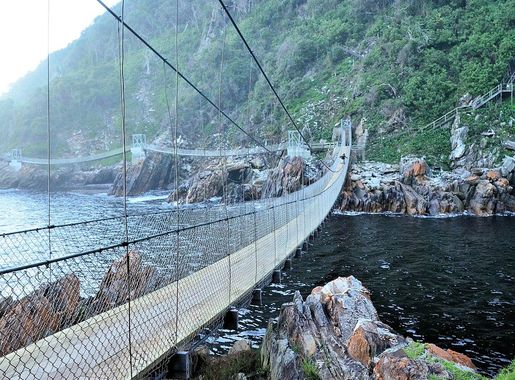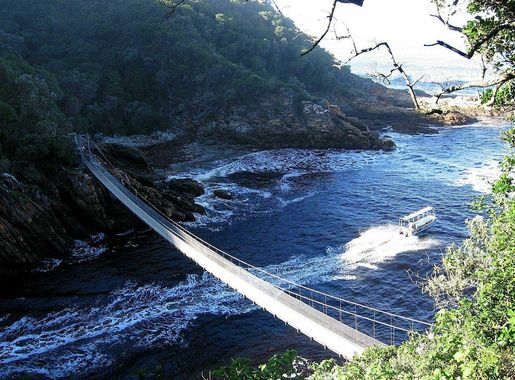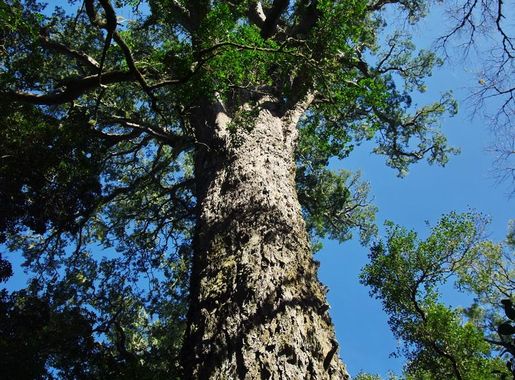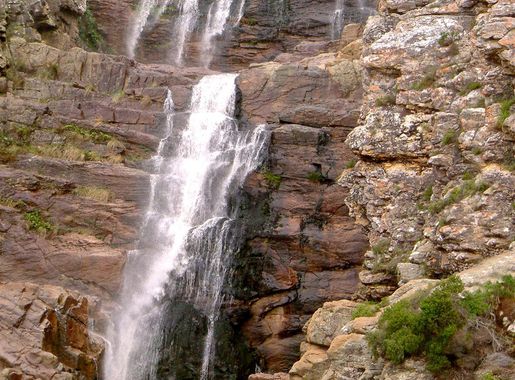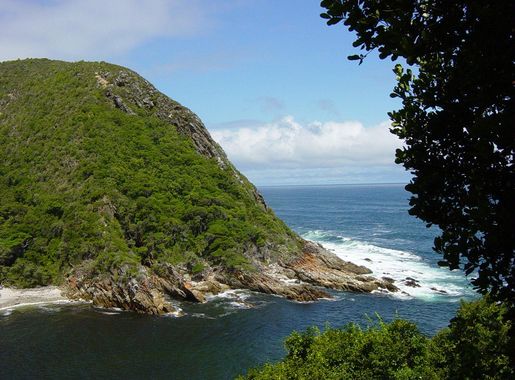
Tsitsikamma National Park: Nature's Thrilling Playground
Explore Tsitsikamma National Park: South Africa's adventure hub with lush forests, dramatic coastlines, and thrilling activities. Perfect for nature lovers and adrenaline junkies.
Tsitsikamma National Park, located along South Africa's Garden Route, is a haven for nature lovers and adventure seekers. The park is famous for its lush forests, towering cliffs, and dramatic coastline. The name 'Tsitsikamma' means 'place of abundant water,' and it certainly lives up to its name with its many rivers and waterfalls. The park offers a wide range of activities to suit all tastes. Hike the Otter Trail, one of the most beautiful hiking trails in the world, or take a more leisurely walk through the forest to see ancient trees and diverse wildlife. Water enthusiasts can enjoy kayaking along the Storms River, where the waters are crystal clear and the scenery is breathtaking. For the brave, the Bloukrans Bridge offers one of the highest bungee jumps in the world. With its diverse ecosystems, Tsitsikamma is also a paradise for bird watchers and marine life enthusiasts. The park is home to a variety of bird species, as well as dolphins and whales that can often be seen from the shore. Whether you're looking for excitement or tranquility, Tsitsikamma National Park has something for everyone.
Local tips in Tsitsikamma National Park
- Carry a waterproof jacket; the weather can be unpredictable.
- Book activities like bungee jumping and kayaking in advance, especially during peak seasons.
- Wear sturdy hiking boots for the Otter Trail and other forest walks.
- Don't forget your binoculars for bird watching and marine life spotting.
- Pack a picnic; there are many scenic spots to enjoy a meal with a view.
Tsitsikamma National Park: Nature's Thrilling Playground
Tsitsikamma National Park, located along South Africa's Garden Route, is a haven for nature lovers and adventure seekers. The park is famous for its lush forests, towering cliffs, and dramatic coastline. The name 'Tsitsikamma' means 'place of abundant water,' and it certainly lives up to its name with its many rivers and waterfalls. The park offers a wide range of activities to suit all tastes. Hike the Otter Trail, one of the most beautiful hiking trails in the world, or take a more leisurely walk through the forest to see ancient trees and diverse wildlife. Water enthusiasts can enjoy kayaking along the Storms River, where the waters are crystal clear and the scenery is breathtaking. For the brave, the Bloukrans Bridge offers one of the highest bungee jumps in the world. With its diverse ecosystems, Tsitsikamma is also a paradise for bird watchers and marine life enthusiasts. The park is home to a variety of bird species, as well as dolphins and whales that can often be seen from the shore. Whether you're looking for excitement or tranquility, Tsitsikamma National Park has something for everyone.
When is the best time to go to Tsitsikamma National Park?
Iconic landmarks you can’t miss
Garden Route National Park
Discover the breathtaking landscapes and rich biodiversity of Garden Route National Park, a must-visit destination for nature lovers and adventure seekers.
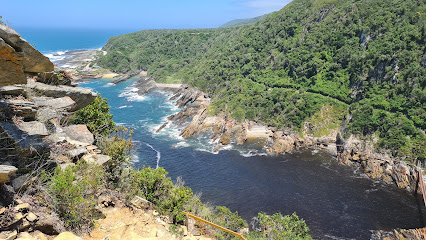
Storms River bridge
Discover the breathtaking beauty of the Storms River Bridge, a stunning attraction offering panoramic views and adventure in South Africa's nature.
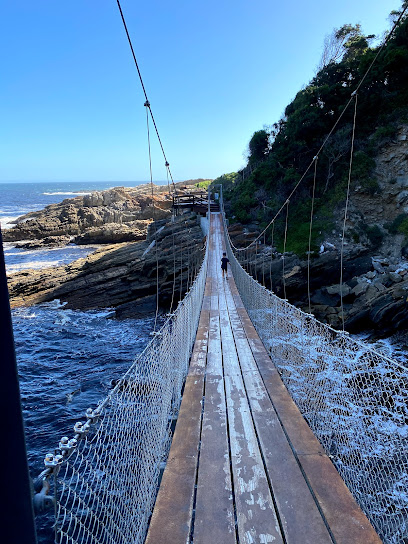
Robberg Nature Reserve
Discover Robberg Nature Reserve: A breathtaking haven of wildlife, scenic trails, and stunning coastal views in South Africa.
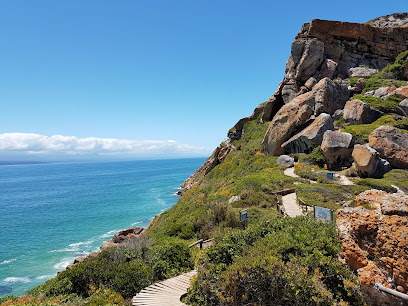
Bloukrans Bridge
Experience the rush of jumping from Bloukrans Bridge, the world's highest bungee jump, set in the breathtaking Tsitsikamma region of South Africa.
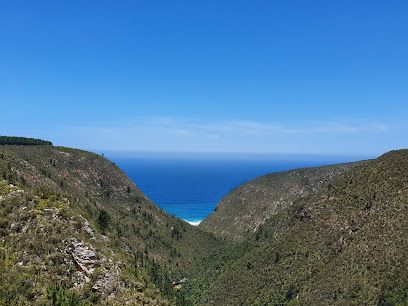
Bloukrans Bungy
Bloukrans Bungy: The Ultimate Adrenaline Rush at the World's Highest Commercial Bungy Jump.
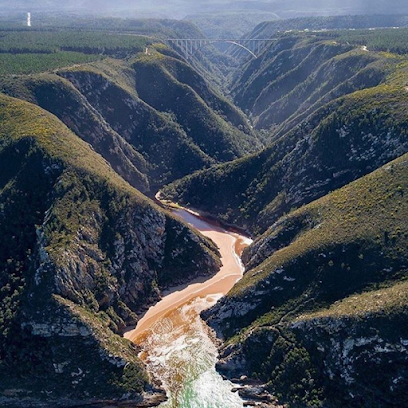
Storms River Mouth Restcamp|Storms River Mouth Rest Camp
Discover the natural beauty and adventure of Storms River Mouth Restcamp in Tsitsikamma National Park, a paradise for outdoor enthusiasts.

Tsitsikamma Canopy Tours
Discover the thrill of Tsitsikamma Canopy Tours, an exhilarating zip line adventure through breathtaking forests and diverse wildlife.
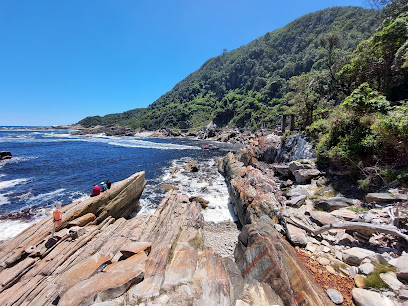
Untouched Adventures
Experience the thrill of adventure in Tsitsikamma with Untouched Adventures, offering canoeing, kayaking, and scuba diving in a stunning natural paradise.
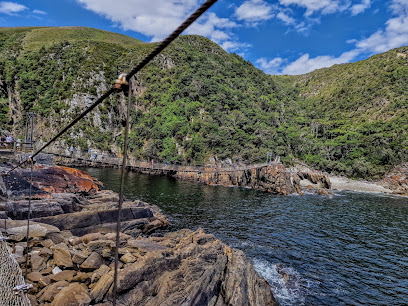
Garden Route Wolf Sanctuary
Explore the Garden Route Wolf Sanctuary in Plettenberg Bay, where conservation meets adventure in an unforgettable wildlife experience.
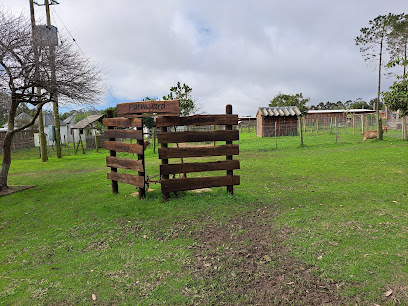
Suspension Bridge
Discover the breathtaking views from the Suspension Bridge at Storms River Mouth, a must-see gem in Tsitsikamma National Park.
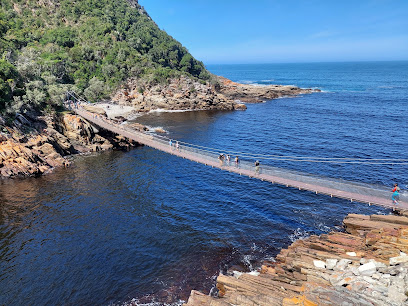
The Big Tree Tsitsikamma
Explore the ancient wonder of The Big Tree in Tsitsikamma National Park, a natural marvel surrounded by stunning landscapes and outdoor adventures.

ZIPLINE @ Tsitsikamma Falls Adventure
Discover the exhilarating zipline adventure at Tsitsikamma Falls, where nature meets thrill for an unforgettable experience in South Africa.
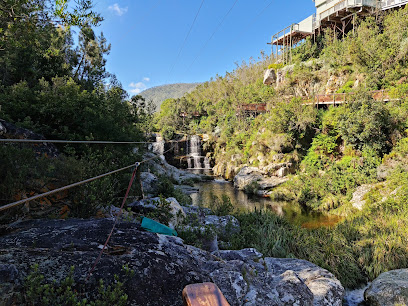
Tsitsikamma Village Inn
Discover the beauty of Tsitsikamma at Tsitsikamma Village Inn, your gateway to adventure and relaxation in the heart of nature.

Tsitsikamma Lodge and Spa
Experience the serenity and adventure of Tsitsikamma Lodge and Spa, where nature meets luxury on South Africa's stunning Garden Route.
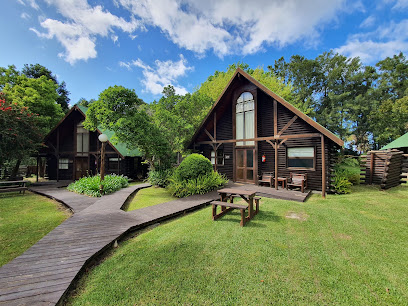
Wild Spirit Backpackers Lodge
Discover the beauty of nature and community at Wild Spirit Backpackers Lodge, a unique eco-friendly retreat in the heart of Tsitsikamma, South Africa.

Unmissable attractions to see
Garden Route National Park
Discover the natural beauty and diverse wildlife of Garden Route National Park, a premier destination for outdoor adventure and breathtaking landscapes.

Storms River bridge
Experience the breathtaking views and thrilling adventures at Storms River Bridge in South Africa's stunning Tsitsikamma National Park.
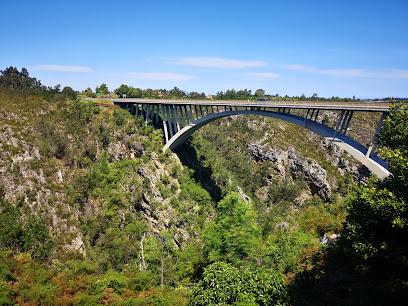
Bloukrans Bungy
Dive into the thrill of adventure at Bloukrans Bungy, the world's highest commercial bungee jump, nestled in stunning Tsitsikamma, South Africa.

Monkeyland
Discover the unforgettable wildlife experiences at Monkeyland, where primate conservation meets visitor interaction in a breathtaking natural setting.
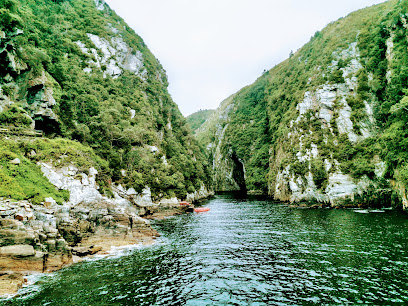
Marilyn's 60's Diner
Discover the charm of the 1960s at Marilyn's 60's Diner in Stormsrivier, where classic American comfort food meets a vibrant retro atmosphere.

Garden Route Wolf Sanctuary
Experience the beauty and majesty of wolves at the Garden Route Wolf Sanctuary, a unique wildlife conservation destination in Plettenberg Bay.
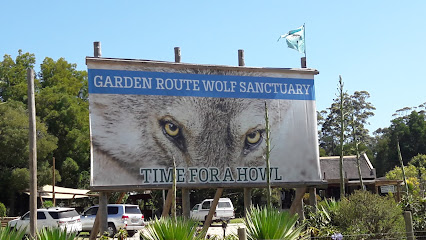
Waterfall Tsitsikamma
Experience the breathtaking beauty and wildlife of Waterfall Tsitsikamma, a must-visit destination in South Africa's stunning Tsitsikamma National Park.
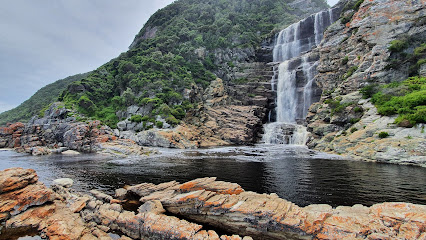
Misty Mountain Reserve Lodge and Self Catering Chalets
Discover the enchanting Misty Mountain Reserve Lodge, a serene escape in Tsitsikamma, perfect for nature lovers and adventure seekers alike.
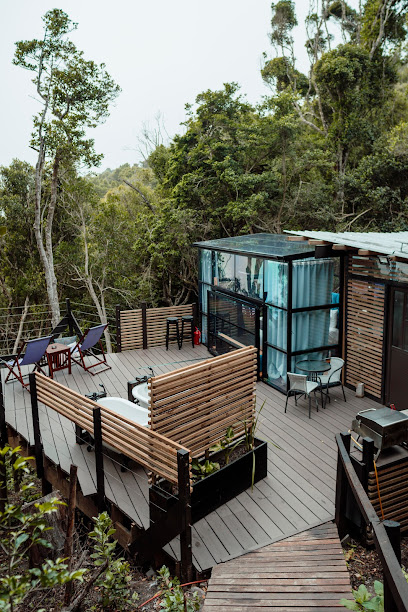
Otter Trail Start
Explore the breathtaking Otter Trail in Tsitsikamma National Park, a hiker's dream featuring stunning coastal views and rich biodiversity.
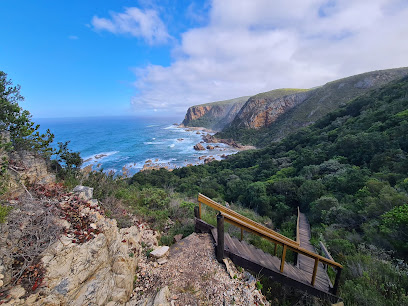
Tsitsikamma Wolf Sanctuary
Experience wildlife conservation like never before at Tsitsikamma Wolf Sanctuary, where you can connect with majestic wolves in their natural habitat.
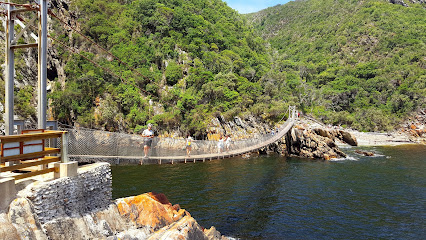
Waterfall Hike
Experience the breathtaking beauty of South Africa's Waterfall Hike, a serene escape into nature with stunning landscapes and cascading waterfalls.
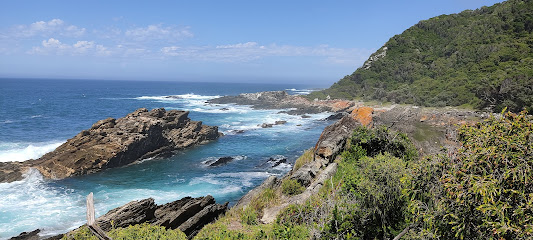
Otter Trail End
Explore the stunning Otter Trail End in South Africa, where breathtaking landscapes and diverse wildlife await every hiking enthusiast.
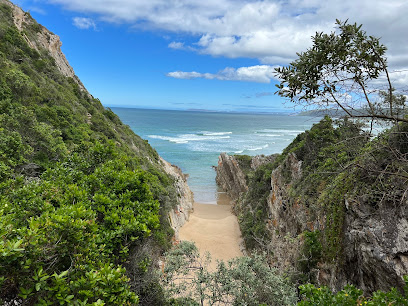
Blue Duiker Trail
Explore the scenic Blue Duiker Trail in Cape Town, a perfect hiking destination for nature lovers and adventure seekers alike.
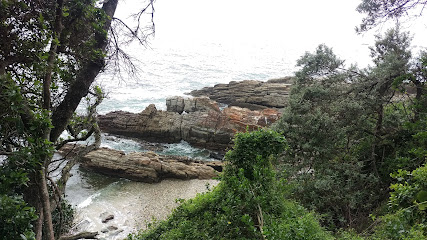
Oubosstrand
Explore Oubosstrand: A Coastal Paradise in South Africa's Nature Preserve, Perfect for Nature Lovers and Adventure Seekers.
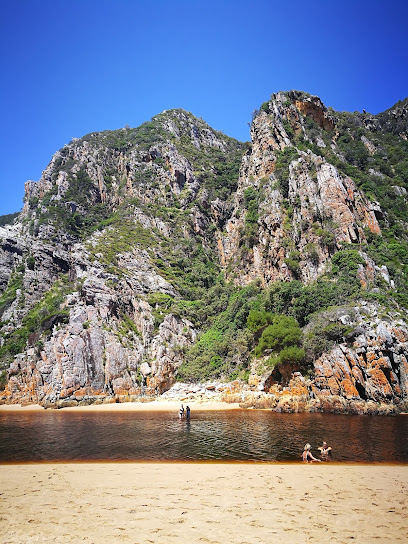
Huisklip Nature Reserve
Explore Huisklip Nature Reserve in Kareedouw, a nature lover's paradise with stunning rock formations and diverse wildlife, perfect for outdoor adventures.
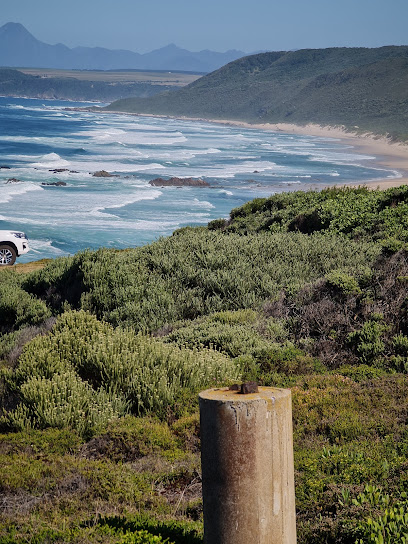
Essential places to dine
Marilyn's 60's Diner
Experience nostalgic dining at Marilyn's 60's Diner in Storms River - where classic breakfasts meet retro charm.
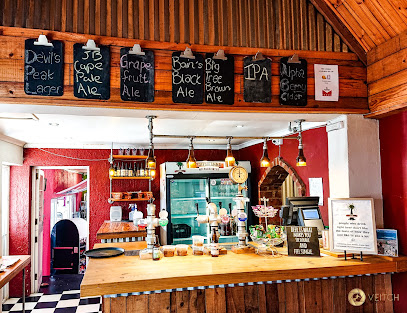
Tsitrus Café
Experience the vibrant flavors of South Africa at Tsitrus Café in Stormsrivier - where fresh ingredients meet warm hospitality.
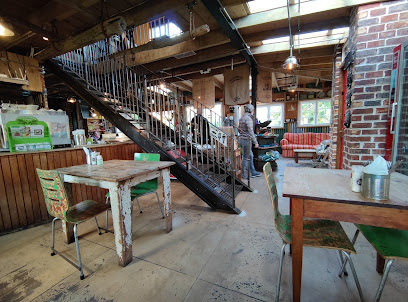
Tsitsikamma Gardens Self-Catering Cottages & Restaurant
Experience comfort and culinary delights at Tsitsikamma Gardens Self-Catering Cottages & Restaurant amidst breathtaking natural beauty.
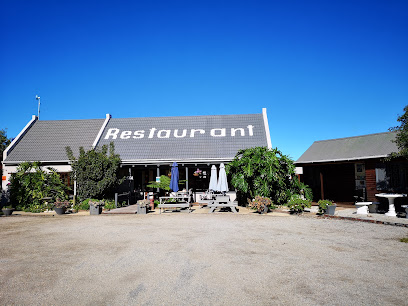
Taste Restaurant and Farmstall
Experience authentic South African cuisine at Taste Restaurant and Farmstall in Storms River—where local flavors meet breathtaking scenery.
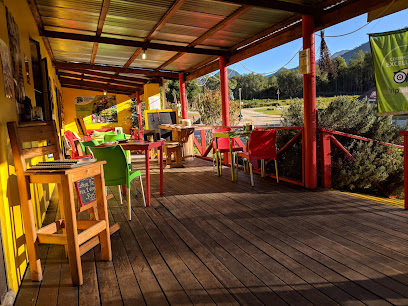
Tsitsikamma Cattle Baron
Discover culinary excellence at Tsitsikamma Cattle Baron – where exquisite steaks meet breathtaking nature.
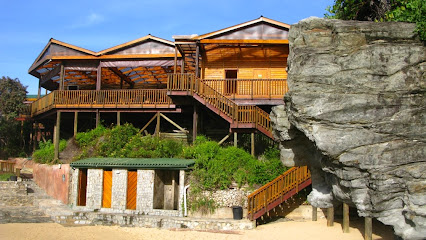
Fynboshoek Cheese
Experience the exquisite flavors of artisanal cheeses in the stunning Tsitsikamma region at Fynboshoek Cheese.
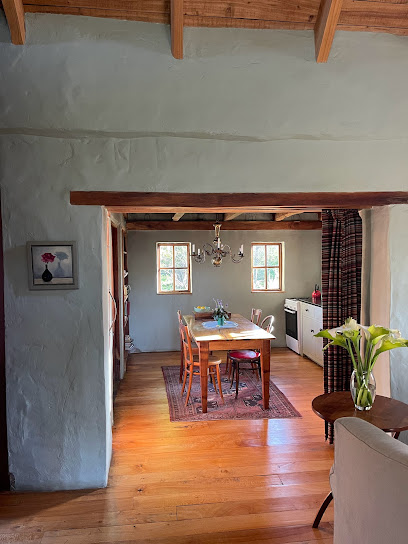
Tsitsikhaya Lodge Restaurant & Spa
Discover tranquility and culinary excellence at Tsitsikhaya Lodge Restaurant & Spa in Stormsrivier.
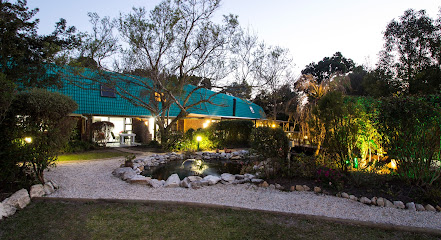
Papa Africa
Experience authentic South African cuisine at Papa Africa in Stormsrivier, renowned for its wood-fired pizzas and welcoming atmosphere.
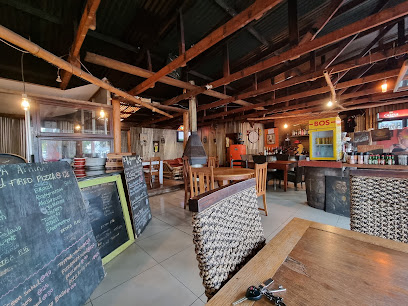
Tsitsikamma Micro Brewery
Discover Tsitsikamma Micro Brewery: A Culinary Haven Offering Craft Beers and Local Cuisine Amidst Breathtaking Scenery.
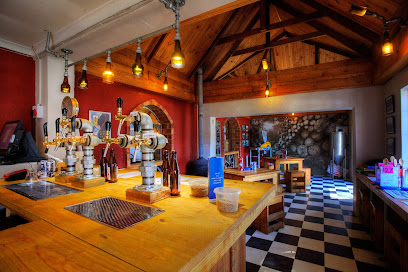
De Oude Martha
Experience authentic South African cuisine at De Oude Martha in Storms River – where delicious food meets warm hospitality.
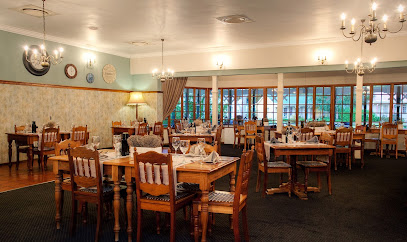
Kasi Corner
Discover authentic South African flavors at Kasi Corner in Storms River - where every dish tells a story.
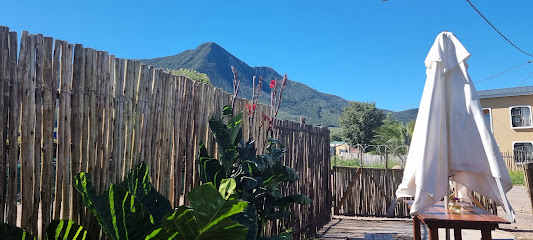
Mugg & Bean On The Move
Discover Mugg & Bean On The Move: Your cozy retreat with delicious food and coffee amidst Tsitsikamma's stunning landscapes.
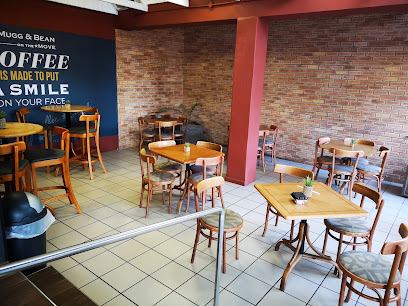
Rafters Restaurant
Experience the best of South African cuisine at Rafters Restaurant in Tsitsikamma—where culinary delights meet nature's beauty.

Cafe Bacchus
Experience local flavors at Café Bacchus in Storms River—where every meal tells a story of South African cuisine.
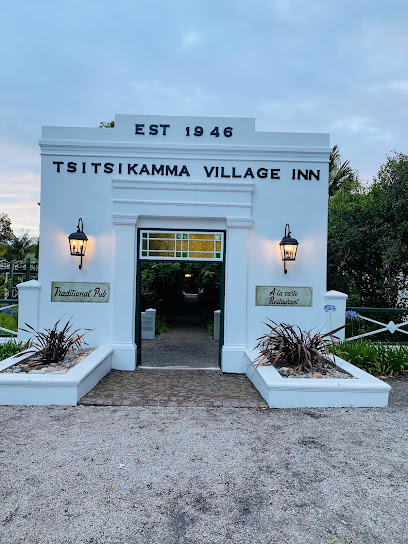
Markets, malls and hidden boutiques
Old Nick Village
Explore Old Nick Village: A charming hub of crafts and breakfast delights near Plettenberg Bay, showcasing local artistry and culture.
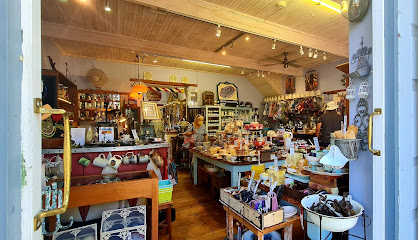
Tsitsikamma Canopy Tours
Discover the thrill of zip-lining through the treetops at Tsitsikamma Canopy Tours, where adventure meets breathtaking natural beauty.
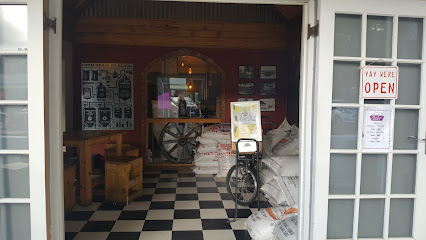
Untouched Adventures
Discover adventure at Untouched Adventures in Storms River Mouth, where thrilling canoeing, kayaking, and scuba diving await in breathtaking natural scenery.
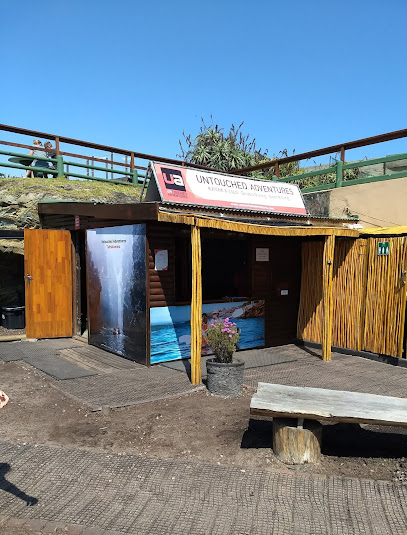
The Big Tree Tsitsikamma
Visit the Big Tree Tsitsikamma, an ancient Yellowwood standing tall in the heart of South Africa's breathtaking national park, a true nature lover's paradise.
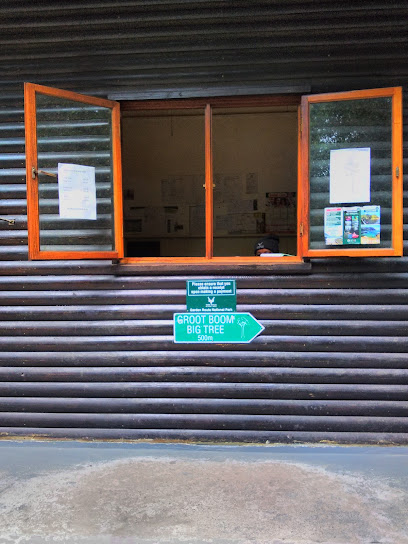
ZIPLINE @ Tsitsikamma Falls Adventure
Soar through the stunning Tsitsikamma landscape at Zipline @ Tsitsikamma Falls Adventure, an unforgettable experience for all thrill-seekers.
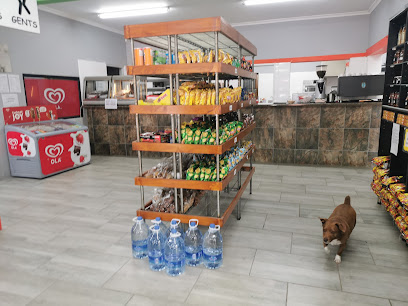
Natures Way Farm Stall
Explore the flavors and charm of Plettenberg Bay at Natures Way Farm Stall, a delightful destination for fresh produce, baked goods, and unique gifts.
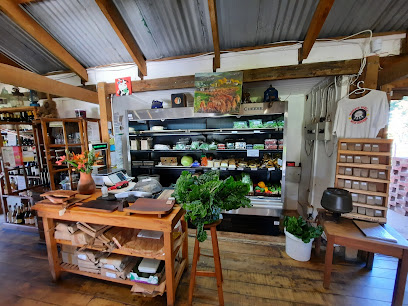
Tsitsikamma Lodge and Spa
Experience the tranquility of Tsitsikamma Lodge and Spa, a perfect blend of adventure and relaxation set in a stunning natural landscape.

Tsitsikamma Gardens Self-Catering Cottages & Restaurant
Discover Tsitsikamma Gardens: A relaxing escape with self-catering cottages and a restaurant offering local flavors in stunning natural surroundings.
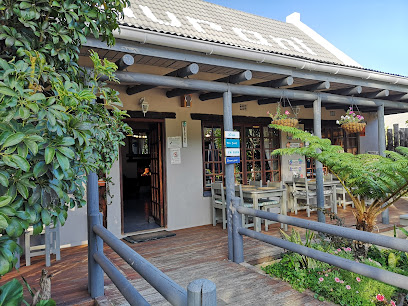
Waterfall Tsitsikamma
Explore Waterfall Tsitsikamma, a breathtaking wildlife refuge in South Africa’s Garden Route, where stunning waterfalls and diverse ecosystems await your discovery.
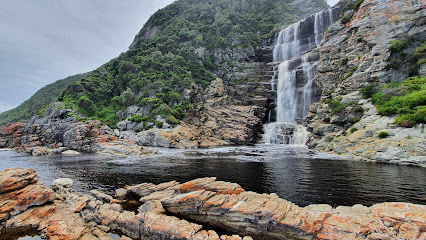
Misty Mountain Reserve Lodge and Self Catering Chalets
Experience the natural beauty and adventure of Misty Mountain Reserve Lodge, a tranquil retreat nestled in the heart of Tsitsikamma's stunning landscapes.
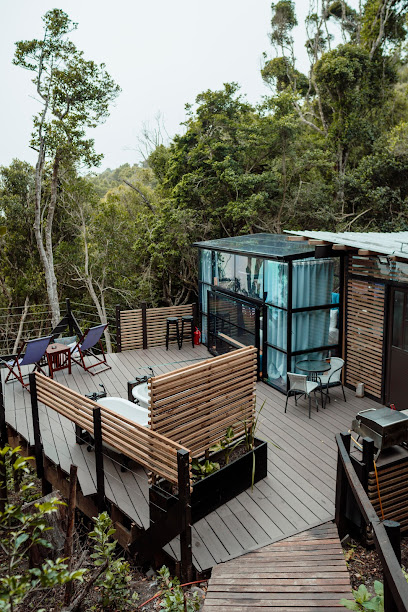
MALI Boutique Lodge & Tube 'n Axe Budget Accommodation
Discover MALI Boutique Lodge: Your Gateway to Adventure and Relaxation in Storms River, South Africa.

Tsitsikamma Wolf Sanctuary
Explore the Tsitsikamma Wolf Sanctuary, a conservation haven where you can connect with wolves and immerse yourself in nature's beauty.
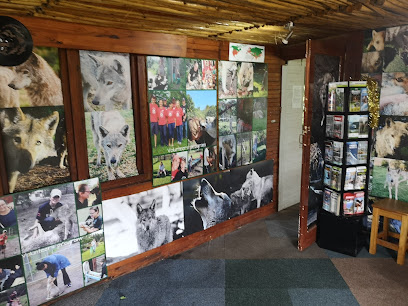
Fynboshoek Cheese
Discover the artisanal cheese of Fynboshoek Cheese in Tsitsikamma, where local flavors meet stunning natural beauty.

Tsitsikamma Blackwater Tubing
Discover the adventure of blackwater tubing in Tsitsikamma, where nature's beauty meets thrilling outdoor fun in an unforgettable experience.
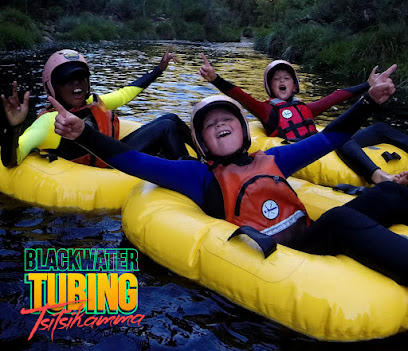
The Village Lodge - Storms River Village
Discover the charm of Storms River Village at The Village Lodge, your perfect base for nature adventures and local experiences.

Essential bars & hidden hideouts
Marilyn's 60's Diner
Experience a delightful journey back to the 1960s at Marilyn's 60's Diner, where nostalgia meets delicious breakfast dishes in Storms River.
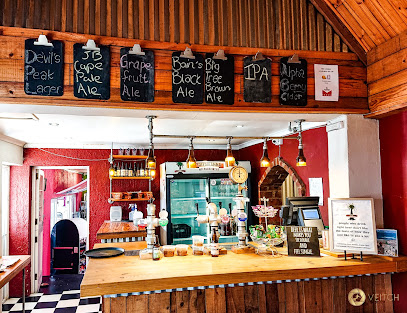
Tsitrus Café
Experience the authentic taste of South African cuisine at Tsitrus Café in Stormsrivier, where freshness and flavor meet in a cozy setting.

Tsitsikamma Lodge and Spa
Discover the beauty of Tsitsikamma at Tsitsikamma Lodge and Spa, where luxury meets nature for an unforgettable getaway.

Tsitsikamma Gardens Self-Catering Cottages & Restaurant
Experience the beauty of nature and the flavors of local cuisine at Tsitsikamma Gardens, your perfect getaway in the Tsitsikamma region.
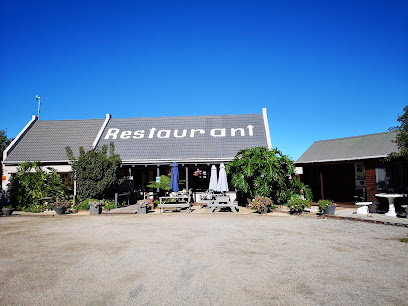
Taste Restaurant and Farmstall
Discover the flavors of Stormsrivier at Taste Restaurant and Farmstall, where fresh ingredients meet heartfelt hospitality in a charming setting.

Misty Mountain Reserve Lodge and Self Catering Chalets
Experience the perfect blend of adventure and relaxation amidst the stunning landscapes of Tsitsikamma at Misty Mountain Reserve Lodge.
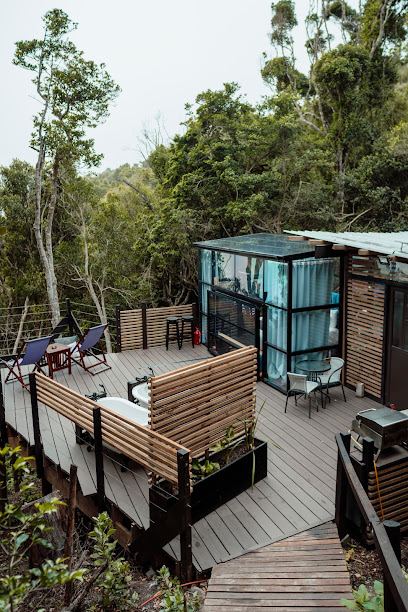
Tsitsikamma Cattle Baron
Indulge in premium steaks and local flavors at Tsitsikamma Cattle Baron, a unique dining experience in the heart of Tsitsikamma National Park.

Fynboshoek Cheese
Discover the delightful world of artisanal cheese at Fynboshoek Cheese in Tsitsikamma, where nature and flavor come together.
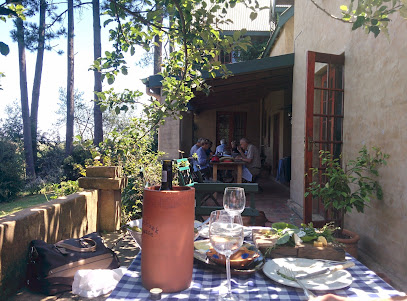
Tsitsikhaya Lodge Restaurant & Spa
Experience exquisite dining and rejuvenating spa treatments at Tsitsikhaya Lodge, nestled in the scenic Storms River region of South Africa.

The Sportsmans Pub & Grill
Experience the ultimate sports atmosphere at The Sportsmans Pub & Grill, where great food, drinks, and live events come together to create unforgettable memories.
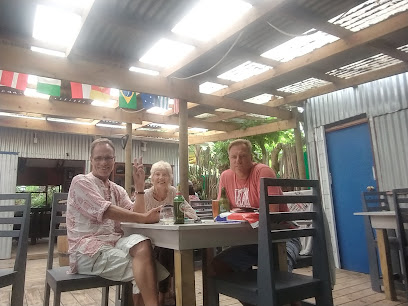
De Oude Martha
Discover De Oude Martha in Storms River for delicious local cuisine and a cozy atmosphere amidst breathtaking natural beauty.
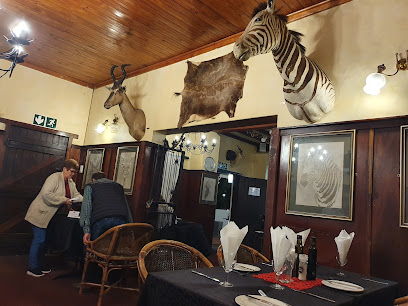
Tsitsikamma Micro Brewery
Discover the taste of Tsitsikamma at the charming microbrewery, offering artisanal beers and local cuisine in a stunning natural setting.

Kasi Corner
Discover authentic South African flavors at Kasi Corner, a culinary haven in Storms River, perfect for tourists seeking local dining experiences.

Countryclub Restaurant and Pub
Experience the delightful flavors and warm hospitality of Countryclub Restaurant and Pub in Kareedouw, South Africa's hidden culinary gem.
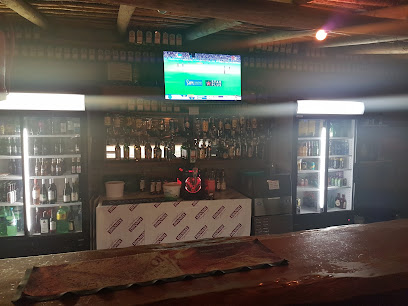
Skulu's Lounge
Discover Kwanokuthula’s vibrant nightlife at Skulu's Lounge, where excellent drinks and a lively atmosphere await.
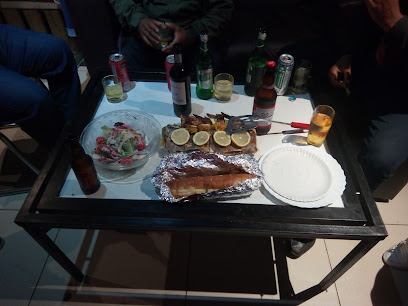
Local Phrases about Tsitsikamma National Park
-
- HelloMolo
[moh-loh] - GoodbyeHamba kakuhle
[ham-bah kah-koo-leh] - YesEwe
[eh-weh] - NoCha
[chah] - Please/You're welcomeNdicela
[en-dee-seh-lah] - Thank youEnkosi
[en-koh-see] - Excuse me/SorryUxolo
[oo-koh-loh] - How are you?Unjani?
[oon-jah-nee] - Fine. And you?Ndicela, wena?
[en-dee-seh-lah, way-nah] - Do you speak English?Ukhuluma isiNgisi?
[oo-khoo-loo-mah ee-see-ngih-see] - I don't understandAndazi
[ahn-dah-zee]
- HelloMolo
-
- I'd like to see the menu, pleaseNdicela ukubona imenyu
[en-dee-seh-lah oo-koo-boh-nah ee-men-you] - I don't eat meatAndithi ntya
[ahn-dee-thee in-tyah] - Cheers!Ooza!
[oh-zah] - I would like to pay, pleaseNdicela ukulipha
[en-dee-seh-lah oo-koo-lee-pah]
- I'd like to see the menu, pleaseNdicela ukubona imenyu
-
- Help!Usizo!
[oo-see-zoh] - Go away!Hamba!
[ham-bah] - Call the Police!Biza amapolisa!
[bee-zah ah-mah-poh-lee-sah] - Call a doctor!Biza udokotela!
[bee-zah oo-doh-koh-teh-lah] - I'm lostNdihlukile
[en-dee-loo-kee-leh] - I'm illNdine indima
[en-dee-neh in-dee-mah]
- Help!Usizo!
-
- I'd like to buy...Ndicela ukuthenga...
[en-dee-seh-lah oo-koo-ten-ghah] - I'm just lookingNdifuna ukubuka kuphela
[en-dee-foo-nah oo-koo-boo-kah koo-peh-lah] - How much is it?Yimalini?
[yee-mah-lee-nee] - That's too expensiveLeyo iyakukhula kakhulu
[leh-yoh ee-yah-koo-koo-lah kah-koo-loo] - Can you lower the price?Ungathatha isaphulelo?
[oon-gah-tah-tah ee-sah-poo-leh-loh]
- I'd like to buy...Ndicela ukuthenga...
-
- What time is it?Yisaphi isikhathi?
[yee-sah-pee ee-see-kah-tee] - It's one o'clockKukhulu okulandelayo
[koo-koo-loo oh-koo-lahn-deh-lah-yoh] - Half past (10)Kwesinye isikhathi (10)
[kweh-see-nyeh ee-see-kah-tee (10)] - MorningEbusuku
[eh-boo-soo-koo] - AfternoonEmini
[eh-mee-nee] - EveningUbusuku
[oo-boo-soo-koo] - YesterdayIzolo
[ee-zoh-loh] - TodayNamhlanje
[nahm-hlahn-jeh] - TomorrowKusasa
[koo-sah-sah] - 1Kunye
[koo-nyeh] - 2Kubili
[koo-bee-lee] - 3Kuthathu
[koo-tah-too] - 4Kune
[koo-neh] - 5Kuhlanu
[koo-hlah-noo] - 6Isixhenxe
[ee-see-khehn-heh] - 7Isixhenxe sibho
[ee-see-khehn-heh seeb-hoh] - 8Kuwile
[koo-wee-leh] - 9Kukhulu
[koo-koo-loo] - 10Kugcwele
[koo-gweh-leh]
- What time is it?Yisaphi isikhathi?
-
- Where's a/the...?Laphi i...
[lah-pee ee] - What's the address?Iyiphi i-adressi?
[ee-yee-pee ee-ah-dreh-see] - Can you show me (on the map)?Uyakwenza ndibone (emephu)?
[oo-yah-kwehn-zah en-dee-boh-neh eh-meh-poo] - When's the next (bus)?Izolo yini eyandizalwa (ibus)?
[ee-zoh-loh yee-nee eyahn-dee-zahl-wah ee-boos] - A ticket (to ....)Ithikithi (ku ....)
[ee-thee-kee-thee koo]
- Where's a/the...?Laphi i...
History of Tsitsikamma National Park
-
Evidence suggests that the area now known as Tsitsikamma National Park has been inhabited by humans for thousands of years. Archaeological finds, including stone tools and shell middens, indicate that the Khoisan people were among the earliest inhabitants. These indigenous people were hunter-gatherers, relying on the rich biodiversity of the region for sustenance.
-
The first recorded European exploration of the Tsitsikamma region occurred in the late 15th century when Portuguese navigators charted the coastline. The name 'Tsitsikamma' itself is derived from a Khoisan word meaning 'place of many waters,' a testament to the numerous rivers and streams that crisscross the area.
-
During the 18th and 19th centuries, European settlers began to move into the Tsitsikamma region. They established farms and small settlements, often at the expense of the indigenous Khoisan people. The dense forests of Tsitsikamma were logged extensively, and the wood was used for shipbuilding and construction.
-
Tsitsikamma National Park was officially established in 1964, making it one of South Africa's oldest marine reserves. The park was created to protect the unique marine and terrestrial ecosystems of the Tsitsikamma region, including its lush forests, dramatic coastline, and diverse wildlife.
-
In 2009, the Tsitsikamma Marine Protected Area was integrated into the Garden Route National Park, further expanding the protected area to include a significant portion of the marine environment. This has helped preserve the region's rich marine biodiversity, including numerous fish species, dolphins, and seals.
-
The Tsitsikamma region is home to a rich cultural heritage, reflecting the diverse influences of its past inhabitants. The park preserves various cultural sites, including rock art and ancient burial grounds, offering a glimpse into the lives of the region's early inhabitants and their interaction with the environment.
-
Today, Tsitsikamma National Park is renowned for its conservation efforts and sustainable tourism practices. The park's management works closely with local communities to ensure that conservation goals are met while providing economic benefits through eco-tourism. Various programs focus on habitat restoration, wildlife protection, and environmental education.
Tsitsikamma National Park Essentials
-
Tsitsikamma National Park is located on the Garden Route in the Eastern Cape of South Africa. The nearest major airport is Port Elizabeth International Airport, approximately 180 kilometers away. From Port Elizabeth, you can rent a car and drive to Tsitsikamma, which takes about 2 hours. Alternatively, you can fly into George Airport, around 165 kilometers from the park, and drive for approximately 2.5 hours. Shuttle services and private transfers are also available from both airports.
-
Within Tsitsikamma National Park, the most convenient way to get around is by car. Rental cars are available at nearby airports and major cities. The park has well-maintained roads and ample parking facilities. For those preferring not to drive, guided tours often include transportation. Additionally, some accommodations offer shuttle services to popular attractions within the park. Hiking and biking are also excellent ways to explore the park's trails and scenic spots.
-
The official currency in South Africa is the South African Rand (ZAR). Credit and debit cards are widely accepted at most hotels, restaurants, and shops within the park. However, it's advisable to carry some cash for smaller establishments and activities where card payments may not be possible. ATMs are available in nearby towns such as Storms River Village, but it's wise to withdraw sufficient cash before entering the park.
-
Tsitsikamma National Park is generally a safe destination for tourists. However, standard safety precautions should be taken. Avoid leaving valuables unattended and ensure your accommodation is securely locked. While the park itself has low crime rates, it's advisable to be cautious in larger towns nearby, especially after dark. Avoid walking alone at night and stay in well-lit, populated areas.
-
In case of emergency, dial 10111 for police assistance or 10177 for medical emergencies. The park has medical facilities and first aid stations at key locations. It's recommended to have travel insurance that covers medical emergencies and activities such as hiking or adventure sports. For minor health issues, there are pharmacies in nearby towns like Storms River Village.
-
Fashion: Do wear comfortable, weather-appropriate clothing and sturdy shoes for hiking. Avoid wearing flashy jewelry or clothing that attracts unnecessary attention. Religion: Do respect local customs and traditions, especially when interacting with communities around the park. Public Transport: Do be respectful and patient when using public transport. Don't eat or drink on public transport. Greetings: Do greet people with a friendly 'hello' or 'good day.' South Africans are generally warm and welcoming. Eating & Drinking: Do try local dishes and accept food offerings graciously. Don't refuse hospitality, as it is considered impolite.
-
To experience Tsitsikamma National Park like a local, visit the Storms River Mouth and take a walk on the suspension bridge for breathtaking views. Engage with local guides who can share insights and stories about the park's flora and fauna. Don't miss the chance to try local delicacies at nearby restaurants, such as fresh seafood and traditional South African dishes. For a unique experience, join a kayak and lilo adventure up the Storms River Gorge.
Trending Landmarks in Tsitsikamma National Park
-
Garden Route National Park
-
Storms River bridge
-
Robberg Nature Reserve
-
Bloukrans Bridge
-
Bloukrans Bungy
-
Storms River Mouth Restcamp|Storms River Mouth Rest Camp
-
Tsitsikamma Canopy Tours
-
Untouched Adventures
-
Garden Route Wolf Sanctuary
-
Suspension Bridge
-
The Big Tree Tsitsikamma
-
ZIPLINE @ Tsitsikamma Falls Adventure
-
Tsitsikamma Village Inn
-
Tsitsikamma Lodge and Spa
-
Wild Spirit Backpackers Lodge
Nearby Cities to Tsitsikamma National Park
-
Things To Do in Cape Town
-
Things To Do in Quthing
-
Things To Do in Mohale's Hoek
-
Things To Do in Mafeteng
-
Things To Do in Bloemfontein
-
Things To Do in Kimberley
-
Things To Do in Maseru
-
Things To Do in Teyateyaneng
-
Things To Do in Thaba-Tseka
-
Things To Do in Leribe
-
Things To Do in Butha-Buthe
-
Things To Do in Mokhotlong
-
Things To Do in Durban
-
Things To Do in Johannesburg
-
Things To Do in Lobatse

